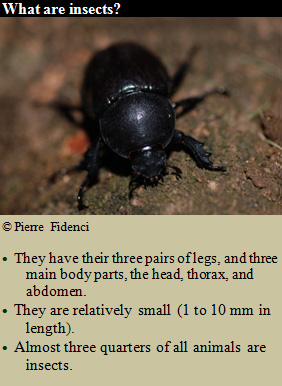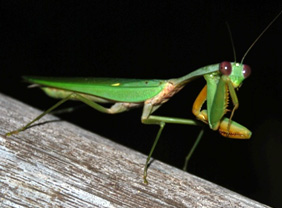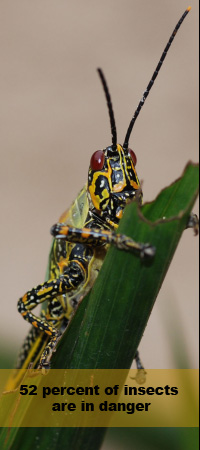|
Insects are the earth’s most diverse organisms. They first evolved around 400 million years ago. Shortly after the development of wings, about 330 million years ago, an explosion of insect species is observed in the fossil record, documenting the spread of insects into new habitat types.
Today, almost three quarters of all animals are insects. Though only 900,000 insects have been identified, scientists agree that there are still large numbers of undocumented species. From 2 to 100 million insect species could exist.
Insects are divided into 32 orders according to morphological and genetic relationships. The four dominant orders, which include the majority of all species on Earth are the Coleoptera (beetles), Hymenoptera (bees, wasps, and ants), Lepidoptera (butterfllies, skippers, and moths), and Diptera (flies). By far, the Coleoptera are the most diverse species of animals, containing about 370,000 species, or 40% of all insects and 10% of all animals.
Insects are identified by their three pairs of legs, and three main body parts, the head, thorax, and abdomen. For example, spiders are not insects since all spiders have eight legs. Insects are protected by a hard exoskeleton made of chitin and have large eyes and antennae. The most primitive insect groups are wingless.
Most insects are 1 to 10 mm in length, some are smaller than some Protozoa, and some are larger than the smallest mammals. The smallest insects include two species of wasps (Megaphragma mymaripenne and Alaptus sp.) with body size ranging from 0.17 mm to 0.2 mm. Example of the biggest insects include moths (e.g., Erebus egrippina) from Brazil which can measure up to 280 mm.
They occupy all continents of the globe except areas in the extreme polar regions and the highest mountains. Most insects occupy terrestrial habitat and need water to live. They usually die if their water content falls below 20 percent. The can live in extreme environmental conditions where most animal life is absent. For example an ant (Ocymyrmex barbiger) found in the Sahara desert can be active at temperature at 67°C. Other insect species can survive well under freezing temperatures (-40°C).
Continue on page 2
|
|



Mantids usually wait to capture other
Insects. © Pierre Fidenci
|









